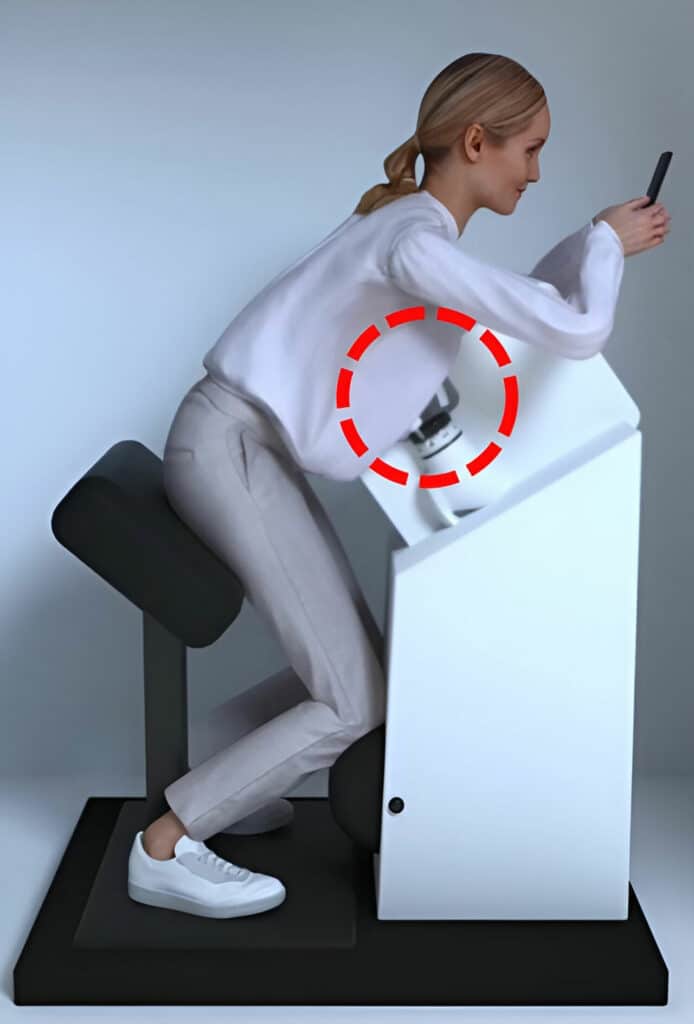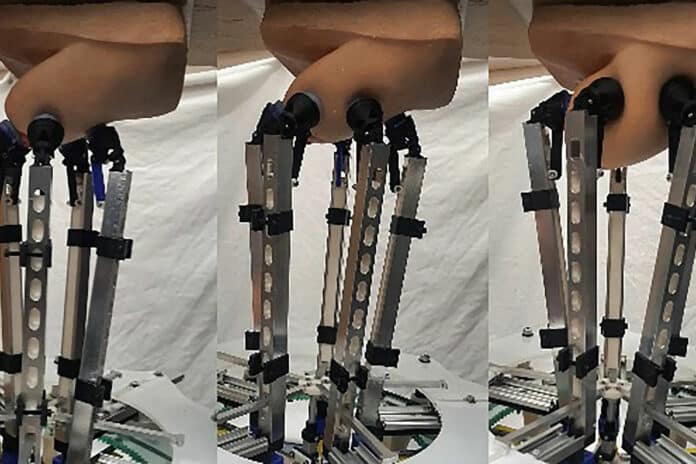Breast examinations are key to the early detection of breast cancer, a disease that affects one in eight women in their lifetime. Breast examinations can be done by trained medical practitioners or by oneself at home.
Although most breast lumps are found by self-examination, a clinical breast examination (CBE) conducted by an expert can help identify suspicious areas that are not noticeable by touch, thereby improving the chances of a full recovery.
Now, researchers at the University of Bristol have developed a prototype robot that could help diagnose breast cancer in the early stages.
The manipulator – a robotIc Radial palpatIon mechaniSm for breast examination (IRIS) – is able to apply very specific forces over a range similar to forces used by human examiners and can detect lumps using sensor technology at larger depths than before.
“There are conflicting ideas about how useful carrying out Clinical Breast Examinations (CBE) are for the health outcomes of the population,” lead author George Jenkinson explained. “It’s generally agreed upon that if it is well performed, then it can be a very useful and low-risk diagnostic technique.”
The researchers created their manipulator using 3D printing and other Computerised Numerical Control techniques. They then conducted laboratory experiments and simulated experiments on a fake silicone breast and its digital twin.

The simulations enabled the team to perform thousands of palpations and test many hypothetical scenarios to calculate the differences in efficiency when using two, three, or four tactile sensors simultaneously. In the lab, they used the silicone breast to demonstrate the simulations were accurate and to experimentally discover the forces for the real equipment.
“We hope that the research can contribute to and complement the arsenal of techniques used to diagnose breast cancer and to generate a large amount of data associated with it that may be useful in trying to identify large-scale trends that could help diagnose breast cancer early,” George added.
The team next plans to combine CBE techniques learned from professionals with AI and fully equip IRIS with sensors to determine the effectiveness of the whole system in identifying potential cancer risks. The ultimate goal is to have the manipulator detect lumps more accurately and deeper than it is possible only by applying human touch.
This promising development could revolutionize how women monitor their breast health. With safe electronic CBEs located in easily accessible places like pharmacies and health centers, women could have access to accurate results and take a proactive approach to their health.
“So far, we have laid all of the groundwork,” said George in the press release. “We have shown that our robotic system has the dexterity necessary to carry out a clinical breast examination – we hope that in the future, this could be a real help in diagnosing cancers early.”
